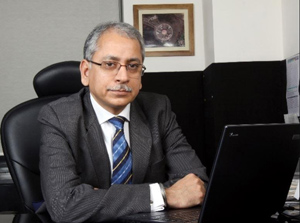KOLKATA: The pay-TV industry in India has been highlighting the regulatory overburden in the industry for some time now. The players have been battling several legal issues, the amended new tariff order (NTO 2.0) being the most discussed one. According to Tata Sky CEO Harit Nagpal, it has not only impacted the growth of the industry, but put a halt on broadcasters’ plans to bring any change in pricing since January 2020, despite rising industry costs.
Speaking at the recently concluded APOS 2021, the Tata Sky CEO said broadcasters will not be able to make up for this period, even if they are allowed to alter prices tomorrow. “A hole has already been created in the ability to generate revenue for the industry. There is a logjam between broadcasters and regulators via legal cases, which we are hoping settles down soon, so that broadcasters can raise prices,” he explained.
According to Nagpal, the price hike will enable broadcasters to invest in creating more differentiated content and help them cater to increasing needs of viewers from various segments. “There has been a negligible investment for the urban viewer segment, even though it is one of the growing segments,” he pointed out, during a virtual session with Media Partners Asia executive director and co-founder Vivek Couto.
But the Tata Sky CEO highlighted that he still remained optimistic about the growth of linear TV in India. “Both will survive; both will grow but not at the cost of each other. The people who can afford a broadband connection at home, and can subscribe to SVoD, can also afford TV because TV is much cheaper than that,” he added. “And viewers who cannot OTT subscriptions will watch content that comes only through cable and satellite. TV viewing remains a habit for Indians.”
Recalling the days he spent days walking in and out of 1,200 customer homes in the rural area, Nagpal said there was rarely a home without a television set in India. “It's like background noise. A family collectively consumes six to 10 hours of TV content per day. It is one segment that leaves a high opportunity for the growth of traditional TV,” he shared.
Despite that, there are still around 100 million homes that don’t have a TV in India. The data shows that TV sales have picked up in the last few years. But there is still a gap in TV penetration this year due to the ongoing crisis, which will be filled in the next few years, he noted.
"We have not seen signs of on-demand content or even broadband penetrating the kind of numbers that we have been hearing for the last few years. Despite the best efforts of most of the broadband operators, we have not seen numbers reaching the level that we are talking about," said Nagpal.
Tata Sky has embraced the change in the industry with the launch of Binge products – its smart boxes which offer both TV and OT content. The DTH operator has also marketed the product aggressively last year.
 "We never expected these services to reach the level of DTH. We said both will grow. Maybe Binge will grow faster in terms of percentage because we have got a small base. But there is enough headroom for the satellite TV market to grow. We are pretty happy with the numbers of both sides," Nagpal stated.
"We never expected these services to reach the level of DTH. We said both will grow. Maybe Binge will grow faster in terms of percentage because we have got a small base. But there is enough headroom for the satellite TV market to grow. We are pretty happy with the numbers of both sides," Nagpal stated.






